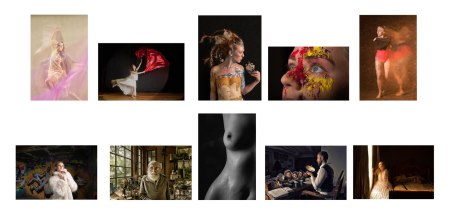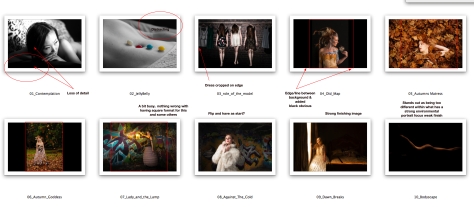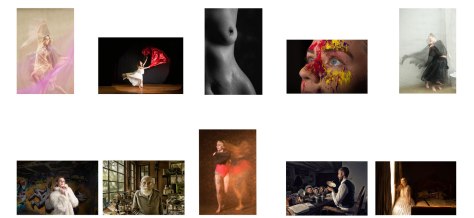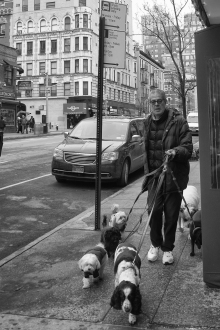 This year I submitted and was successful in achieving the licentiate level within the PSNZ Honours system. This was the combination of a number of years working towards the goal, although inconsistently. In this post I am going to give a fairly honest account of what happened along the way in the hope that it will help other people going for their honours.
This year I submitted and was successful in achieving the licentiate level within the PSNZ Honours system. This was the combination of a number of years working towards the goal, although inconsistently. In this post I am going to give a fairly honest account of what happened along the way in the hope that it will help other people going for their honours.
I first got interested in applying for others in 2012 although I cannot remember exactly when. The convention in 2013 was going to be in Wellington and I always said that if I was going to the put the effort putting a set together that I wanted to be able to pick the certificate up in person.
By this time I had moved through the beginners and intermediate grades of the Hutt Camera Club winning at both levels. Based on the fact that a number of my images had got acceptance is in competitions outside of the club, and honours within it, I felt I met the minimum requirement set out in the guidelines. I also believed it when other photographers told me I was good enough to put forward a set.
As most photographers do when they begin this journey I downloaded the reference material from the PSNZ website. Unfortunately anyone who had read it will know that it can be extremely confusing at times.
I then went through my Lightroom catalogue and identified around 30 images that I thought were good enough for consideration. I was lucky enough to have Simon Woolf offer to assist me in the process and so one lunchtime I visited his Wellington studio with printed copies of all 30 images.
He laid them out over the floor of the studio rejecting quite a few, that I quite liked. After about 40 minutes we ended up with about four definite possibilities and a number of other images that even needed work or he recommended I re-shoot.
Even back then I had too much of confidence in my photography that I now recognize was bordering on arrogance. While I fully accepted that Simon had a lot of experience, I was not completely in agreement with some of the choices and changes that he was recommended.

At the same time there was a group of 12 other photographers at the Hutt Camera Blub who are working towards the L level. Despite being a member of the group, for some reason that I now cannot remember, I did not take the set much further. When it became obvious that a combination of the timing of the convention and the fact that I’m was not all impressed the speakers, I put the set aside and took it no further. The group was very successful and all bar one achieved their Licentiates that year.
The 2014 Malborough convention was occurring at the exactly the same time as my daughter was representing New Zealand in Roller Skating, so in the lead up to it I did not take the set any further.
However come September 2014, when the program for the Tauranga convention was released, I made the decision that I was attending and I decided to pick the set back up. Again I started with the ones that Simon had chosen and again went through the library catalogue for images shot in the last two years.
At the time it appeared that print sets had a higher success than digitals so I had every intention to submit prints. Unfortunately a series of home appliances failing around home in the December meant that this was not feasible and I would be forced to submit a digital set instead.
The problem that I was facing was that during the time since the discussion with Simon my photography had developed further and I had established that my main focus was with people. I took the set to a fellow photographer and we initially tried to integrate the old and new images but it became obvious that the old set did not represent my photographic style now.
Anyone with that familiar with the PSNZ honours system will know that there are several levels. The Licentiate is the lowest level. It is expected that you demonstrate proficiency over a range of photographic skills. At this level a theme is not required. The Associate level is at a higher level and does operate on a theme. There is no requirement to have one level before moving onto the next, and there have been a number of photographers who have been successful got their Associate without first achieving the Licentiate.
It became obvious that with the images we were now leaning towards were following a theme and my friend was of the opinion that my photography was strong enough to submit an Associate set.
Taking their advice we ditched virtually every image from the original set and selected 12 images that I believe ran together. We structured the set so that it flowed with the use of colour.
One of the recommendations in the guidelines is to seek advice from a number of people with regard to your set. I approached Bruce Girdwood who at that stage was just a member of the judge accreditation panel, and he agreed to look at the set.
He came back with the honest advice that the set was not strong enough for the Associate but that there was a possibility to make a Licentiate set out of it. We agreed to drop two images and he also recommended tweaks to a couple of other images.
It is at this point that I know I made a fatal mistake. When submitting images for competitions you should not be so in love with them that you cannot see the flaws nor take advice about them. As far as I was concerned I had selected 10 great image, the colour provided a flow between the images and I could easily reel off the various approaches that were taken amongst the ten.
My expectations for success were so high that I actually started mapping out the images that I was going to shoot that year to submit for an Associate. It is therefore hit me like a lead balloon when I opened the letter from the Honours Board telling me that I have been unsuccessful. The letter contained the following explanation:
“The board felt that the theme dad distracted the photographer from the requirements for Licentiate as set out in the guidelines, namely those relating diversity of approach etc. to demonstrate overall competence with the camera. Your individual images are mainly of a very good standard, but each did have some small fault apart from 9 which was considered to be especially strong. The last image was considered to be out of context with the rest of the set and the weakest one was identified as Jelly Belly, where the arm and pillo beyond the torso are distracting and the composition generally is not strong. You are clearly a competent photographer of the subjects you have shown but the Board would like evidence of that competency in other disciplines.
The letter made me real angry. The only thing that you could call a theme was that all of the images were of women, but there was diversity of approach. That anger continued through to the convention when I saw the successful sets. It became obvious to me that the Honours Board viewed diversity as being someone who shot different genres. When you are in negative space you also look at other people’s images and see the flaws and wonder how they got through.
About a month later after the convention I was able to get some further feedback from a person present at the judging. This strictly breached some protocols but at least it let me see where I had gone wrong.

The problem started what the very first image and then went downhill with the second one. This image was titled Jelly Belly and it hangs on the wall in my bedroom. I really like this image so much that I actually ignored separate comments from both my wife and a fellow club member that there were issues with. Unfortunately by the time your first two images have been marked down the set is pretty much over.
Now some people have the ability to pick themselves back up again and try the next year. Well I would like to think that was me, but the reality was that it wasn’t, and I did not do anything else leading up to the 2016 Convention in Queenstown. However seeing the honours suits on a wall there inspired me two again try. But time I was going to go right.
In May 2016 I had the opportunity two take part in a photographic exhibition with my wife at the Odlin Gallery in Lower Hutt. In preparation for that I purchased 12 brand-new mattes with the intention that they would be used once for the exhibition and then again for a print set in the Honours. The majority of images within the exhibition were street scenes shot in various countries you have visited earlier in the year.
After my previous disastrous effort this time I have decided to not only take advice but to take it early enough maybe would make a difference. As Bruce Girdwood had been appointed to the Honours Board I approached another member of the Judge Accreditation Panel (Shona Jaray) to see if she would help. So on a Saturday morning in July I travelled to her farm in Waikanae with a set of 12 images that I hoped would be the base of a new set. Others were still encouraging to go straight for the Associate but the first meeting with Shona dispelled that notion.
My initial idea for the set was still too stick within the genre pf people but too separate the images quite clearly into separate groups such as conceptual, straight and classic portraiture and Street Photography. This fell apart when she assessed that none of the street images were of a high enough standard to be acceptable. By the end of the session we had five images that could possible make the set.
Fortunately Shona has good contacts on the Honours Board and was able to confirm for me that diversity was not restricted to different genres, but if you were shooting in one then you had to show different approaches. As I spend just about a hour a week watching Youtube photographic videos, were was no shortage of ideas to try.
As it would happen on the way back from Shona’s place we stopped for lunch at a small cafe. The owner and location was so brilliant that I asked if I could photograph him and that image ended up in the final set. I knew that the images we had selected meet the standard portrait style so it was now time to look for the alternatives.
After seeing a video on using long exposure with studio flash, I booked studio space on two occasions to try this approach with different models. (You can read about the first shoot here and the second one on this link). Then during a Lindsay Adler video she used a macro lens for portraiture I decided to see what I can could create. The result was a striking image that you can read about here.
In September I was also fortunate to be able to attend a workshop at the regional convention run by Esther Bunning on creative portraiture what the models present I had a play in capture camera double exposure. You can read more about this here)
All through this period I was also submitting images that I was considering into both club and local competitions to see what reactions they received. I was also taking into consideration comments that the judges made. For example on image was flipped in the final set as a judge said that it made a better composition that way.

Come November I figured that my set was finished and I had an arrangement of 10 images sorted. Shona was unavailable at this time so I sort the advice of fellow club member William Wright. As before I took full size images around to his place.

He was generally happy with the set however he was initially concerned how the image “Late for the Ball” (Bottom row second from left) fitted in with the others.
 The image has been in the set right from the start. However as Shona had also expressed a similar comment, the image was pulled. This is despite the fact that this image had won a merit at the Central Region 2 years before.
The image has been in the set right from the start. However as Shona had also expressed a similar comment, the image was pulled. This is despite the fact that this image had won a merit at the Central Region 2 years before.
William suggested that I should bring a black and white image into the set and I decided that a nude would be a good addition to the set. Bringing in that image into the set required a little shuffling round.

I thought that at this point we were almost there but then William pointed out that there was an issue in the last image on the top row. There was a line running down the image, as well as a white object in the corner that was distracting. The line was actually the corner of the pillar.

I made several attempts to fix the image in photoshop but in the end decided to replace it with a image taken of Sian at a body painting event, however that agains required some adjusting in the layout.
I initially came up with this layout, however when we looked at the colour tones decided that the black & white nude suited the bottom row than the top.

It was a long process, and along the way a lot of highly successful images were considered and rejected. In the end it worked because my set was one of 40 successful ones. Given that there were 100 sets up for consideration I was extremely happy with the result.
Now onto the next level.


